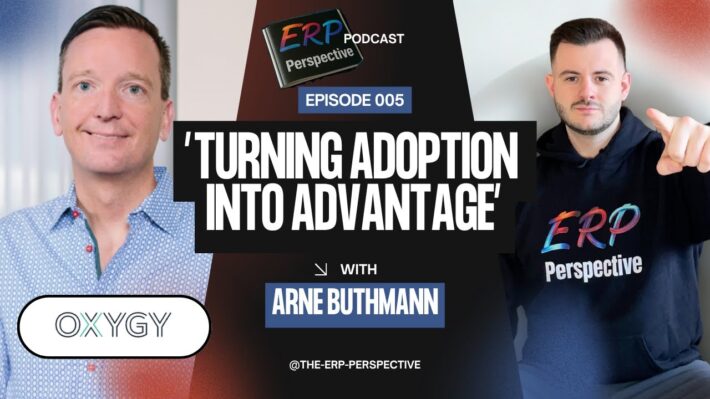Key Points
• Finding patients with rare diseases can be greatly accelerated through data-enabled integration of personal and non-personal promotion
• Strongly aligned cross-functional collaboration and a test-and-learn approach to data analytics are key for the success of this multi-channel and digital commercialization approach
• Implementing such a new commercial operating model in an agile fashion enables speed to impact and ensures stakeholder support
Background
PharmaCo had just invested in enhancing its capability to increase health care provider engagement through an integrated and scalable multi-channel and digital promotion framework. A new operating model had been designed with updated processes, roles and responsibilities, systems and new ways of working across functions and with external vendors for patient and physician data.
In search of a pilot product for this new operating model PharmaCo decided to focus on RareX, a rare disease product for a second line cancer therapy. In the past, PharmaCo struggled to find patients who would benefit from RareX. They now saw the newly designed operating model as an opportunity to shift their commercial model for RareX towards a more targeted approach, integrating end-to-end and highly automated non-personal with personal promotional activities. This case study illustrates the approach PharmaCo took, the achieved outcomes, and key success factors.
The Need for Change
When PharmaCo launched RareX it was initially commercialized in a traditional fashion. The salesforce received a large, tiered list of physicians, most of them general oncologists, with the marching order to call on them to talk about the product. However, what PharmaCo heard back was that because RareX was targeted at such a rare condition it wasn’t relevant for many physicians. Most community oncologists would see only one of these patients per year or every other year. At the very least, heavy reliance on salesforce with these doctors was inefficient, at worst, it was irrelevant. For the salesforce which was also responsible for promoting other PharmaCo products this experience led to decreased incentives to promote RareX and initiated a vicious cycle which resulted in a much slower uptake of RareX in the market than originally forecasted.
There Must Be a Better Way
Convinced that there must be a better way of commercializing RareX with those community oncologists, PharmaCo leveraged the upgraded operating model for multi-channel promotion with the goal to provide physicians with information when oncologists actually saw a patient with the rare condition. The idea was to leverage patient claims data, data which is anonymous but provides all the information that can be found in a longitudinal patient record: diagnostic codes, what tests were done, and which physicians were seeing the patient, ordering tests, and prescribing drugs. Using this data source helped narrow down the number of physicians who were likely treating a patient with the rare condition. Still the challenge remained that instead of one ICD 10 diagnostic code linked to the disease, there were ten. Tapping into the new analytics capabilities, PharmaCo increased the likelihood of finding relevant patients by creating an algorithm to identify patients that had received one of the ten ICD 10 diagnostic codes and had been prescribed one of the available five first line treatments. The algorithm also helped determine from the patient record which physician was most likely the one to make the treatment decision for this patient. The RareX brand team complemented this data with intelligence that the salesforce was gathering. Finally, they leveraged an agency to call the physician office to qualify the lead, to verify that there really was a patient, and to check whether the doctor’s office had already referred the patient to a specialist. The data was sent to PharmaCo’s analytics group who passed it on to the salesforce – providing the reps with actionable insights.
Integrating Non-personal with Personal Promotional Activities
While these efforts already showed significant improvements in targeting physicians and patients, PharmaCo didn’t stop here. Leveraging the new multi-channel promotion capabilities, PharmaCo fully integrated personal and non-personal promotion by simultaneously sending the information that the salesforce received to non-personal promotion partners who augmented the salesforce activities with messages to the same target doctors. They used personalized on-spot communication when they received the information that a physician had one of these rare patients who failed to respond to the 1st line treatment. For some doctors, the promotion partner even had data about the preferred communication channel helping to further customize the message and content. Synching personal and non-personal promotion activities was a challenge, but PharmaCo had an advantage – RareX was indicated for second-line treatment. This gave them a cushion between the identification of the patient and the treatment decision. While they still couldn’t predict when a sales rep was going to get an appointment with a physician, they could ensure that a doctor got messages from multiple angles within the timeframe of a few weeks.
The Return on Investment
After six months on the journey it was time to take stock. The results were astounding: there was one group of community physicians that had been identified as alert doctors, the salesforce had received the information about them, but for one reason or another, sales representatives hadn’t called on this group. This group basically showed no different prescribing behavior than before. On the other hand, there was the group of alert doctors that the sales representatives had been able to visit and that had received non-personal promotion. The results were astounding: in one month where PharmaCo received 1 prescription from the first group that hadn’t been promoted to, PharmaCo received 40 prescriptions from the second group. Not only had the prescribing behavior of the physicians changed, the sales representatives appreciated that they finally had information available that helped them be more focused with their targeting. In the past they received target lists of hundreds of physicians, but now they had a list each month with only five or ten names that they were asked to call on. Since they we also supposed to promote other PharmaCo products, this shorter list enabled them to be more efficient and effective in promoting RareX.
Factors of Success
• Think operating model: While using data and analytics to find patients in a more targeted way was a key success factor, the enabler for this was the enhanced operating model for multi-channel and digital promotion and the strongly aligned cross functional collaboration. Between the brand team, the salesforce, the analytics group, IT and external agencies PharmaCo had redefined how work gets done in a more agile and rapid-prototyping way. This required upgraded processes, roles and responsibilities, people competencies, technology and data.
• Test and learn: PharmaCo made a conscious decision to accept that some steps in the new operating model were still manual at the beginning of their journey. This enabled them to showcase, in a relatively short amount of time, that their approach yielded increased patient access and prevented them from making expensive investments in automation in case it wasn’t effective. Working in an agile way was the key to speed and impact. What is a good enough solution which can be up and running in two months and can then be further iterated and improved?
• Maximize use of existing resources: To avoid large investments at the beginning of the project PharmaCo tapped into the organizational and system capabilities they already had as much as possible. They quickly established collaboration between existing functions and activated hidden features within their existing systems that were simply not used before. A lot of the initial set-up work consisted of articulating a particular challenge to somebody who was knowledgeable about the software or the system and letting them figure out how to solve it.
• Get leadership on board: The potential upside in sales sold senior leadership on selecting RareX as the pilot for the new commercial model. This was especially important as pulling it off still required securing competing resources, whether with the salesforce who was also selling other products or with the IT and analytics group. Having senior leadership support made things happen more quickly.
Creating Economies of Scale
It was important for PharmaCo to show that the new operating model could work for one of the brands in their portfolio. Going through some hic-ups during the pilot phase ensured that the scale up to other brands went more smoothly. Automation and doing things in a way that required very little effort was a key factor in scaling up. In addition, PharmaCo further invested in resources and competence building, bought data more frequently to get closer to real-time insights – especially for first-line brands – and streamlined processes and collaboration between all parties involved.
Conclusion
As much as this new commercial model in PharmaCo was enabled through data, analytics and technologies the key to success and speed to impact was to utilize and reconfigure capabilities which already existed. Getting people and systems to play together quickly in new ways helped demonstrate the commercial value for the foundation of further investments and scale up across PharmaCo’s portfolio.
About the author:
Arne Buthmann is a partner at OXYGY. Arne has twenty years of experience helping biopharma companies transform their operating model and build new capabilities. He is based in New Jersey and can be reached at arne.buthmann@oxygyconsulting.com.
The articles and podcasts of this section were mostly prepared by Valeocon authors, now part of OXYGY






